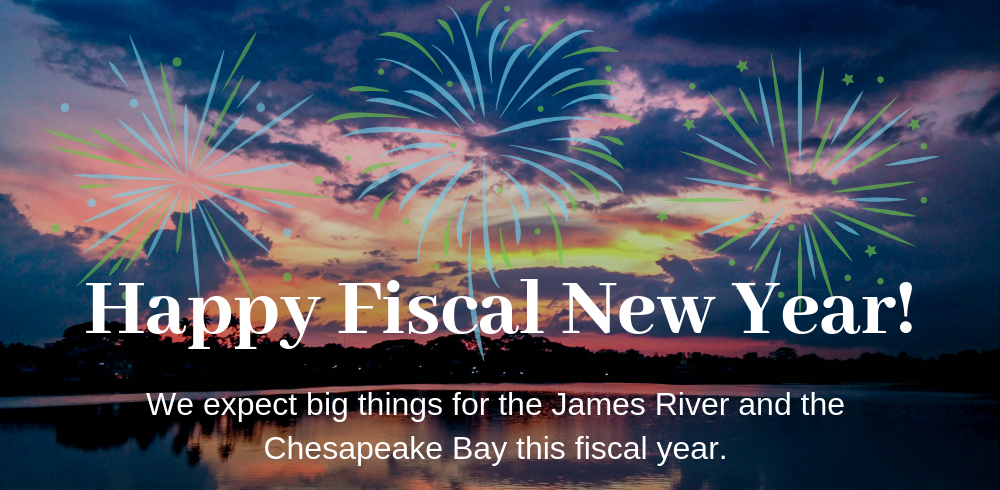Welcome to FY2020! July marks the start of Virginia’s new fiscal year, which means everything our Advocacy Team achieved during the 2019 General Assembly is now in effect. Light up the leftover fireworks because we’ve got one hundred million reasons to celebrate!
Thanks to our dynamite Action Network volunteers, Virginia’s 2020 budget includes:
- Nearly $90 million to install conservation practices on farmland, an unprecedented investment that will help Virginia farmers protect their streams, their soil, and their livestock;
- $10 million for Stormwater Local Assistance Fund projects, a program that matches a community’s investment, dollar for dollar, in projects that reduce polluted runoff, create inviting green spaces, and improve drainage during rain events;
- and $1 million for Virginia’s Conservation Assistance Program, which helps homeowners, businesses, and churches install small-scale, urban stormwater projects.
We expect big things for the James River and the Chesapeake Bay this fiscal year. But with your help, it’s just the start.
Virginia’s new plan to restore the Bay by 2025 will take major investments to reduce pollution from farmland, developed communities, and wastewater treatment plants. Our success depends on having strong, reliable resources. That’s why we’re urging Governor Northam to include significant clean water funding in his 2021-2022 Budget. You can help by telling him how important a clean river and strong water quality funding are to you.
Cleaning up the Bay is a State-Federal partnership. America’s Founding River and the Chesapeake need continued support from federal partners like the Environmental Protection Agency, too. Last month, the House of Representatives passed a bill appropriating $85 million for the Chesapeake Bay Program at EPA, a $12 million increase that could mean more funding for projects like our James River Buffer program, which installed over 7 miles of livestock exclusion fencing, restored more than 18 acres of riparian stream buffers, and planted almost 4,500 trees in the James River watershed. This funding would be a major win for the Chesapeake Bay Cleanup and for local water quality.

